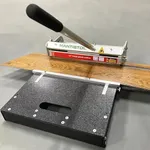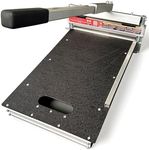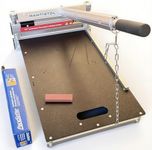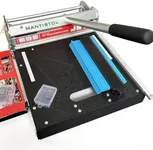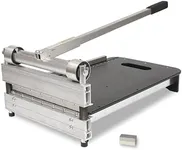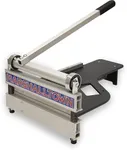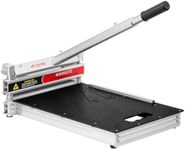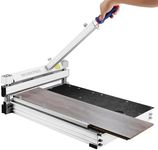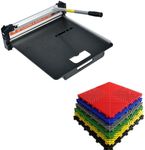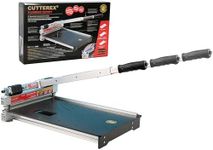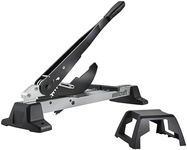Buying Guide for the Best Laminate Flooring Cutter
Choosing the right laminate flooring cutter is essential for achieving clean, precise cuts and ensuring a smooth installation process. A good cutter will save you time, reduce waste, and help you achieve professional results. When selecting a laminate flooring cutter, consider the type of cuts you need to make, the volume of work, and your comfort with using the tool. Understanding the key specifications will help you make an informed decision that aligns with your project needs.Cutting CapacityCutting capacity refers to the maximum thickness and width of laminate flooring that the cutter can handle. This is important because it determines whether the cutter can accommodate the size of the laminate planks you are working with. Typically, cutting capacities range from 8 to 12 inches in width and up to 15mm in thickness. If you are working with standard laminate planks, a cutter with a moderate cutting capacity will suffice. However, for thicker or wider planks, ensure the cutter can handle the dimensions to avoid any issues during installation.
Blade MaterialThe blade material affects the durability and sharpness of the cutter. Common materials include steel and tungsten carbide. Steel blades are generally more affordable and suitable for light to moderate use, while tungsten carbide blades are more durable and maintain sharpness longer, making them ideal for heavy-duty or professional use. Consider how often you will use the cutter and the volume of work to determine the best blade material for your needs.
Type of CutterThere are different types of laminate flooring cutters, including guillotine-style, sliding, and rotary cutters. Guillotine-style cutters are manual and provide straight cuts with minimal noise and dust, making them suitable for home use. Sliding cutters offer more precision and are often used for angled cuts, while rotary cutters are electric and can handle larger volumes of work quickly. Choose the type based on the complexity of your project and your comfort level with using manual or electric tools.
PortabilityPortability refers to how easy it is to move and store the cutter. This is important if you need to transport the cutter between job sites or if you have limited storage space. Lightweight and compact models are easier to carry and store, making them ideal for DIY enthusiasts or those with limited workspace. If you plan to use the cutter in a fixed location, portability may be less of a concern.
Ease of UseEase of use encompasses how user-friendly the cutter is, including features like ergonomic handles, clear measurement guides, and simple operation mechanisms. A cutter that is easy to use will reduce fatigue and improve accuracy, especially for beginners or those working on large projects. Look for features that enhance comfort and precision, and consider your own experience level when selecting a cutter.
